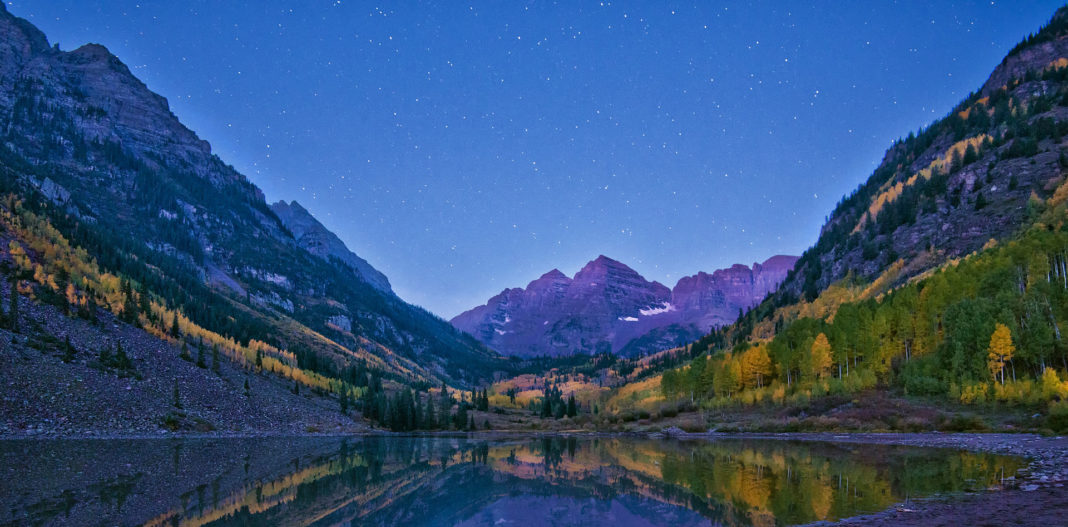The Maroon Bells are two peaks in the Elk Mountains, Maroon Peak, and North Maroon Peak, separated by about half a kilometer.
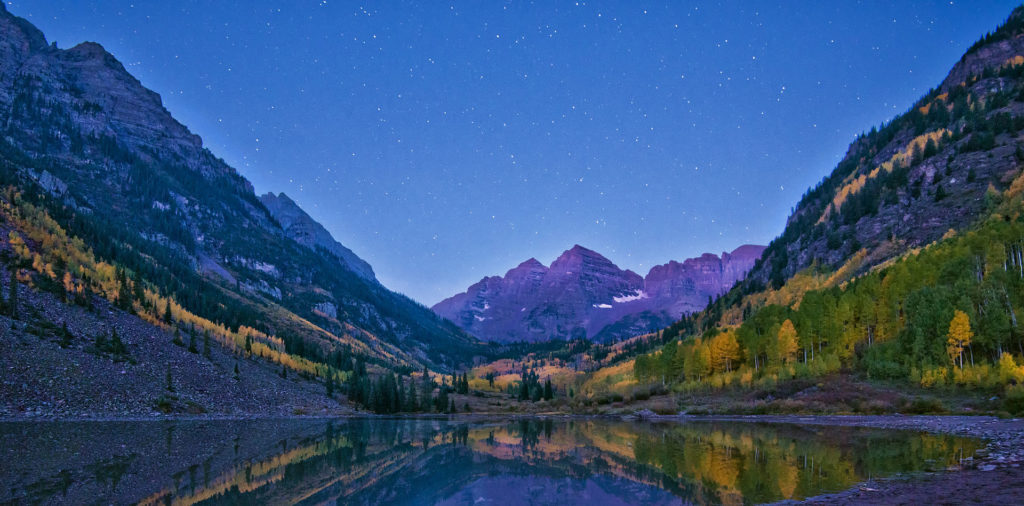
The Maroon Bells are composed of Maroon Formation mudstone. Mudstone is weak and fractures readily, giving rise to dangerously loose rock along almost any route. The mudstone is also responsible for the Bells’ distinctive maroon color. And according to the U.S. Forest Service, the mountains received their distinctive maroon coloring from the weathering of hematite, an iron-bearing mineral, while Maroon Lake occupies a basin that was sculpted by Ice Age glaciers.
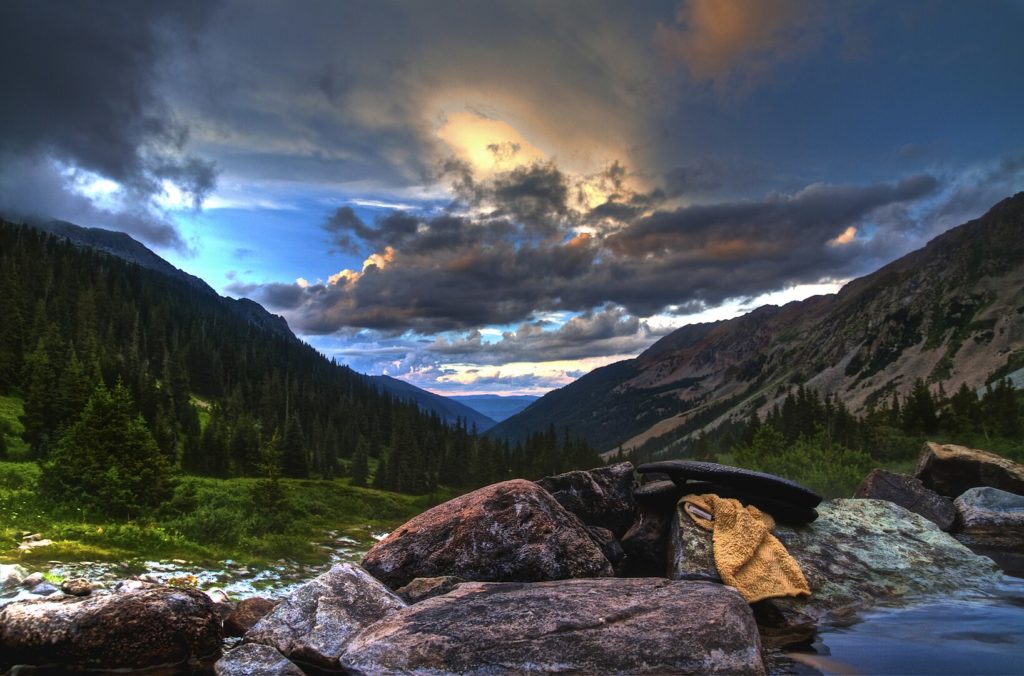
From meadows of vibrant wildflowers to airy groves of Aspen trees to summit-based alpine tundra, the Maroon Bells promise a variety of natural habitats and a diverse, vivid representation of the wild Elk Mountain range. With six scenic hiking trails, various camping sites, and biking paths, visitors can enjoy multiple ways to access Aspen’s natural marvels and endless mountain adventures any time of year.
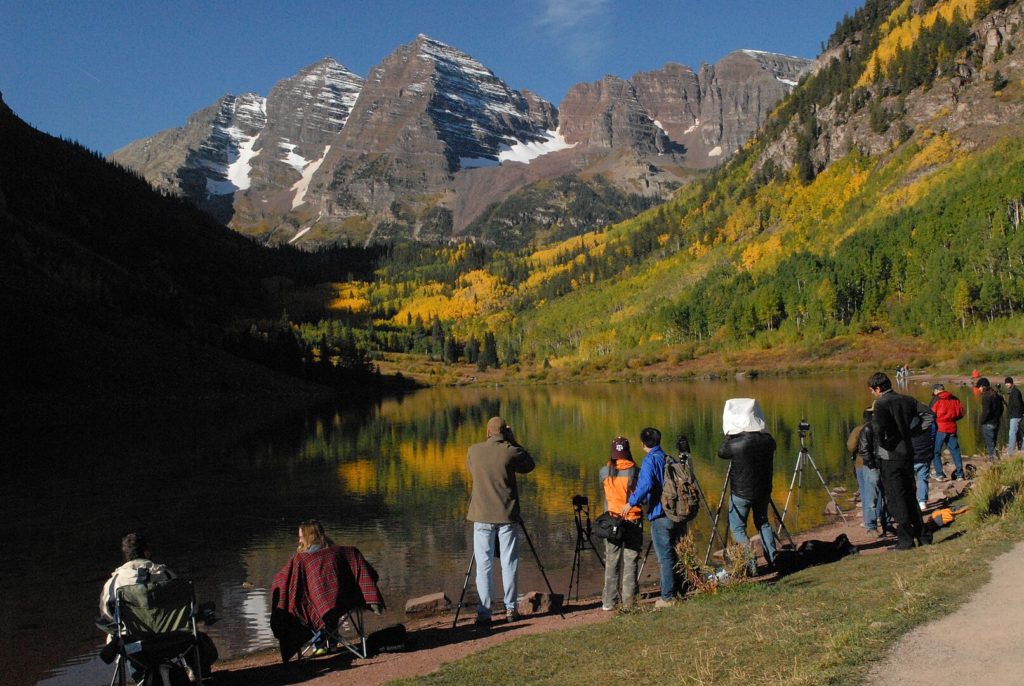
The Maroon Bells are an increasingly popular destination for day and overnight visitors; around 300,000 people visit the Bells every season. Because the Maroon Bells area receives such high levels of visitor use, the USFS has established a long-term plan to protect and preserve the scenic area and larger wilderness areas. Solutions include the required use of bear canisters for backcountry campers, management of day and overnight use, leashed dog education and ticketing, reduction of heavy horse use in high-use areas, and prohibiting overnight camping and excessive day use at particular sites.
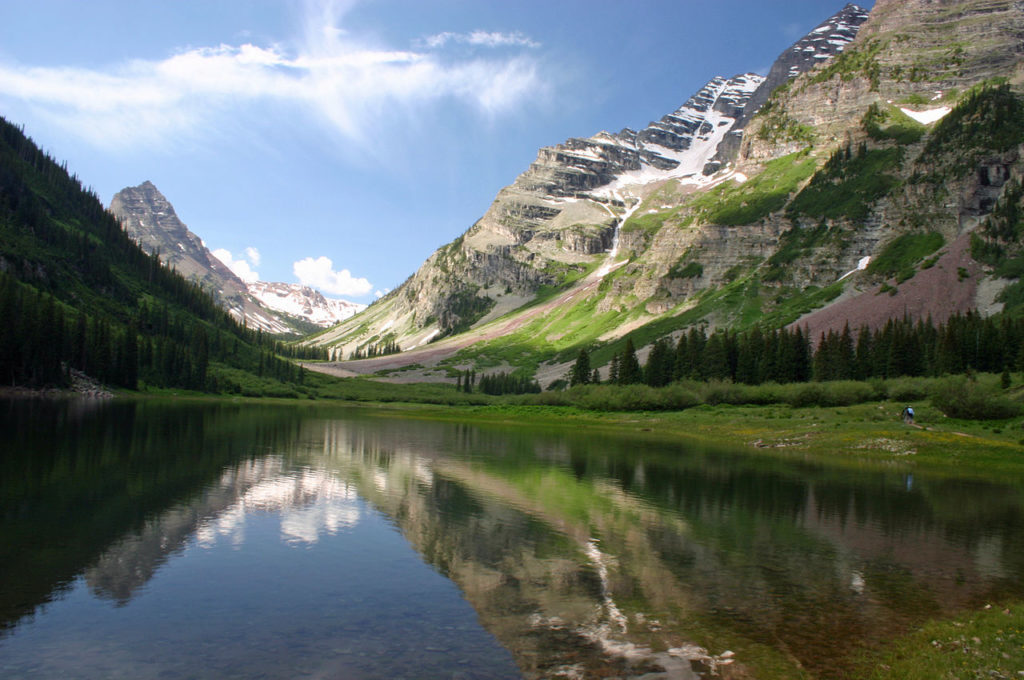
According to the Internet





